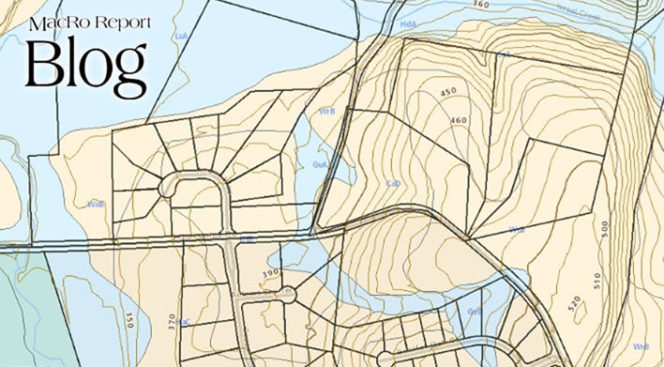Understanding the basic principles of how to subdivide a tract of real estate can often bust the fantasy of turning a quick dollar as a developer.
We are blessed to live in an economically vibrant area.
blessed to live in an economically vibrant area.
Businesses and families want to locate here and our region continues to grow and develop.
The “proper” rate of growth is a constant debate that tends to dominate local politics. While the discourse over growth can get heated, I believe most people will agree that we’re fortunate the discussion centers on how much growth to allow versus “why is our local economy shrinking.”
Since the inception of MacRo in 1990, land has been one of our primary specialties. Rocky and I have assisted hundreds of clients in the disposition, acquisition, and/or development of raw land, farms and building lots.
When evaluating the market value of land, the potential to subdivide and develop the subject cannot be ignored. This post provides a cursory look into the primary considerations involved in the analysis of potential subdivision and/or development.
Before we dive in, let’s take a minute to define a few key terms.
Subdivision is the process of dividing a single parcel of land into multiple lots which can be used (and sold) separately. Development is the process of physically improving a property.
Normally the subdivision process will necessitate some development to occur–for example, potable water must be made available to each lot; so, either public water lines will need to be extended or wells will need to be drilled on each lot. Other development activities may not be required for subdivision but may be desired in order to enhance the value of a property–for example, leveling the topography of the property or installing custom landscaping may be beneficial. So, while subdivision and development are separate processes there is a good bit of overlap between the two.
For purposes of this article, we’ll lump the two processes together and call it all “development”.
Development is a complex, time consuming and expensive process. While the potential for profit can be substantial, there is a direct correlation between risk and reward. Some properties have great development potential, but the property owner may not want to take on the risk and expense involved. In these cases the property owner may desire to bring in a development partner who will assume some of the risks and rewards, or the current owner may wish to sell the property as “developable land” and let the new owner undertake the process. The current owner can benefit from having a development analysis of the property in hand so that the new owner understands (and will pay for) the development potential inherent in the property.
